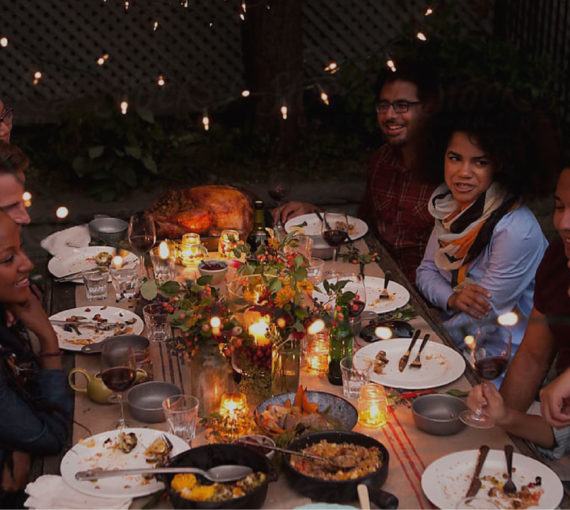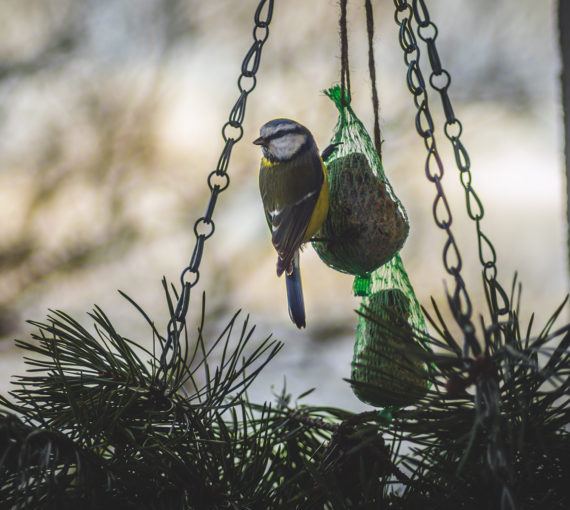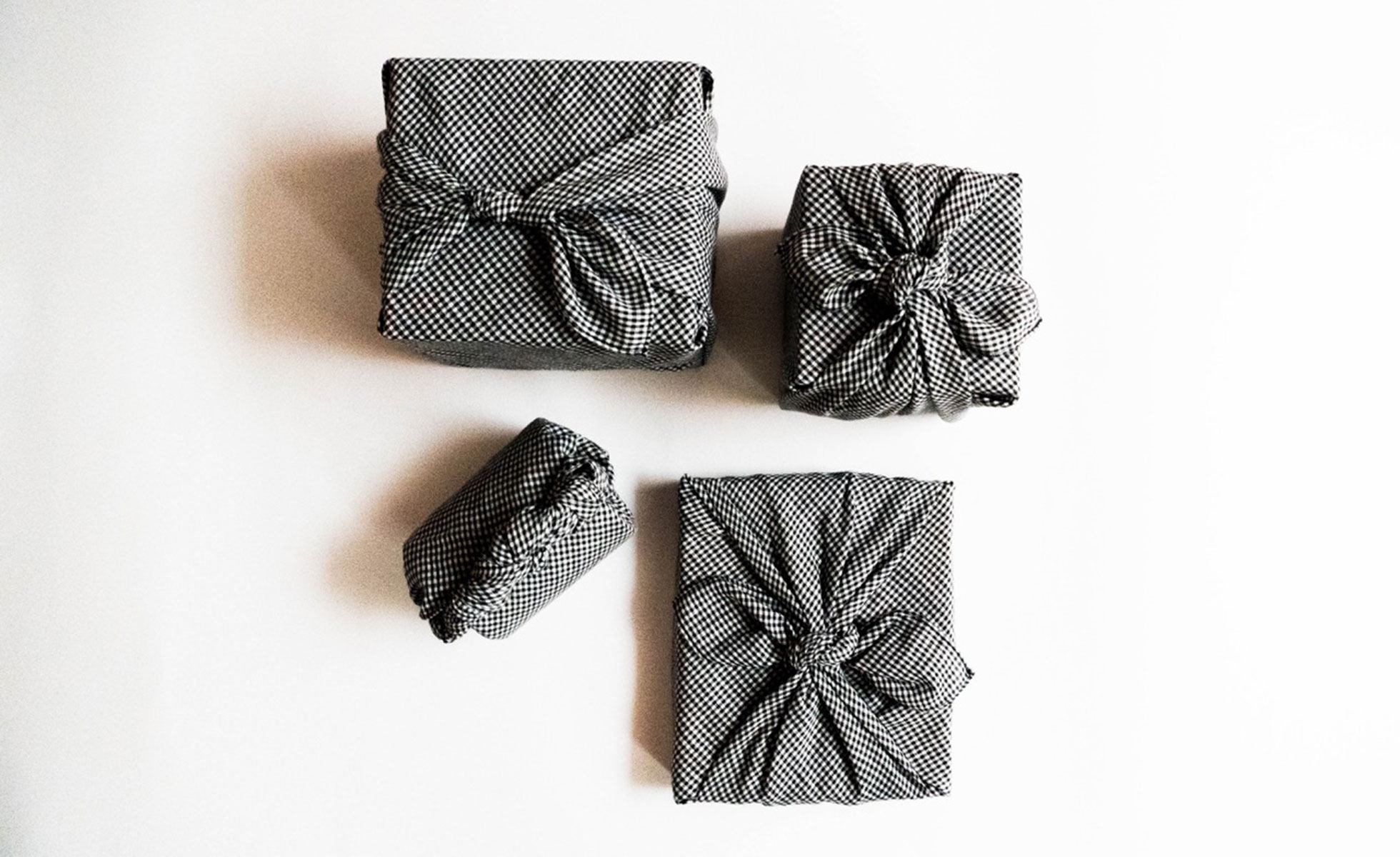
Furoshiki, or Japanese wrapping cloth, is a zero waste and affordable alternative to gift wrap. (Photo: Ekoshiki)
Anytime — holidays, birthdays, weddings, anniversaries, graduations, apologies, in sympathy, celebration or just because — is a good time to show gratitude with a “green” gift.
All-occasion gift ideas
Gift-giving practices are as varied as the myriad of cultures on the planet. Some are rooted in ancient traditions. Others are about a recent trend. Most are expressions of caring, connection and/or respect, often freely given without expectation of anything in return.
Give or ask for “presence” instead of “presents.” The precious gift of time never has to be dusted, recycled or regifted!
Or choose something from this list— for yourself or for your partner, family members, colleagues, friends, neighbours, your kids’ teachers, babysitters and anyone else in your life your want to acknowledge:
- Give outdoor experiences. Consider signing the recipient up for a nature photography class, a Parks Canada Discovery Pass or a guided snowshoe trek, paddling trip, horseback riding excursion or ski, snowboard, kayaking, sailing or surf lesson. (Or any other outside activity)! Check out Indigenous-led locally guided history, culture and ecology tours and native plant workshops too.
- Give a green service. Turn people on to green cleaning or cloth diaper services. Get them a subscription to a community shared agriculture box or introduce them to local, organic produce delivery. Treat them to an eco-friendly spa experience.
- Give zero waste/DIY goodness. Visit a local zero waste shop for gift certificates or give replenishable products in reuseable containers from a refill store. Give books or resources that support DIY hobbies and skills.
- Give skills good enough to eat. Gift tickets to a cooking, food fermenting, canning, foraging or vegetable gardening workshop. Give credits to a local farmers market (if they’re offered) or — if your recipient has never been — take them for their first time.
- Give to a cause. Support charities your loved ones care about by donating in their honour. Consider animal shelters, environmental organizations (like ours!), wildlife protection agencies or social justice or community service groups.
- Put reconciliation and reparation into practice. Give gifts that support local businesses owned by historically marginalized people.
- Buy quality. If you’re going to buy, choose what will last. Avoid non-recyclable plastics. Look for ethically made products. Don’t get sucked into buying gift packs — they’re mostly wrapping and usually made up of stuff that didn’t sell.
- Give shared experiences. Look for activities you can participate in together, like a gardening, pottery painting or beeswax candle–making class. Buy tickets to a live event, festival, concert or performance. Visit an art gallery, museum, landmark or green space. Treat the recipient to a vegetarian or farm-to-table restaurant meal.
- Give time, skills, talents or service. Cook a meal, bake a cake (or something else they love), serenade them with a song, make art, write and recite a poem, pick, arrange and deliver flowers, offer to look after pets, teach them sewing, crocheting, knitting, quilting or other skills you have.
- Give second-hand goodness. Whatever new thing you’re shopping for probably already exists! Hunt for collectibles and vintage treasures at thrift and consignment stores, in antique shops and online marketplaces where sporting goods, records, books, clothing items, children’s toys, artworks, decorations and housewares abound.
- Pass along valuables. Hand down an heirloom or collectible they love or give a small, sentimental token.
- Give cash or financial support. Give the recipient freedom to spend where they need. If you have the means, help them make a sustainable investment for their future.
- Include a personal note or letter or record a video message. Most often it’s the thought that counts!
Make it a group thing!
The gift of community is almost always appreciated.
- Organize a gathering or throw a party. Coordinate friends to meet in a park, host a BBQ or plan a themed event. Ever heard of a walking party?
- Pitch in! Co-ordinate with others to chip in on a more significant gift or collaborate on the ideas above.
- Set up a food circle or meal train. This is a great gift for folks who could use some support in times of need.
Remember: be sensitive to the recipient’s comfort level if they don’t like surprises or tend toward introversion. Not everyone enjoys attention!

Shopping tip! Don’t rush.
Choosing rush delivery often means that cargo planes and trucks go out half-empty. Shop in person or online ahead of time to give shipping more time and reduce emissions.
LEARN SIX MORE WAYS TO LOWER YOUR ONLINE SHOPPING ENVIRONMENTAL IMPACT
How to regift
Don’t feel bad about regifting. It’s a thoughtful undertaking!
Why regift?
- Is there something you have you know a particular person would love? That level of personal thought in a gift means a lot!
- Not everyone cares about “new.” (And you get to share your values along with the gift.)
- You already own the item or received too many and it’s impossible or a hassle to return or exchange. (Remember: returning items bought online doubles the packaging and travel distance, increasing waste and emissions, and many of these items are trashed and never resold.)
- You can own less instead of organizing more.
- Downsizing? Moving? Instead of schlepping (good, reusable) stuff you don’t use, spread it on surfaces and invite friends over (maybe one at a time?) to take their picks. Don’t hover.
- Someone else would appreciate the item more!
Regifting etiquette
Regift unto others as you would have them regift unto you.
- Don’t regift broken or opened items. Donate or recycle them.
- Personalize it. Giving a journal? Write a favourite quote or recipe inside the cover. Clothing? Alter or embellish it.
- Optional: Be open about it.
Host a regift party!
Ever heard of a white elephant gift exchange? Put a “green” twist on this fun activity and get everyone to contribute re-gifted items!
Or, collect re-gift-ables and organize them in a drawer, box or cupboard throughout the year. Then set up a “table of goodness” where recipients can pick whatever item(s) they want from your stash.
How to wrap gifts (without gift wrap)
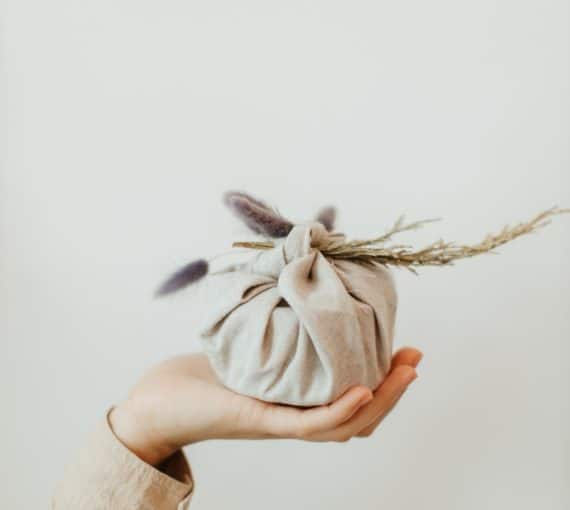
Furoshiki
Wrap gifts in fabric using traditional Japanese techniques known as “furoshiki.” Whether you’re giving a bottle (or two) of organic wine, a tin of treats — or any object — you won’t need paper, scissors or tape.
If you can tie a knot, you can wrap using furoshiki. They become reusable gifts! Make your own or reuse or regift tea towels, linens, cloth napkins and scarves, or find these and other fabrics at a thrift store. Follow step-by-step tutorials online.
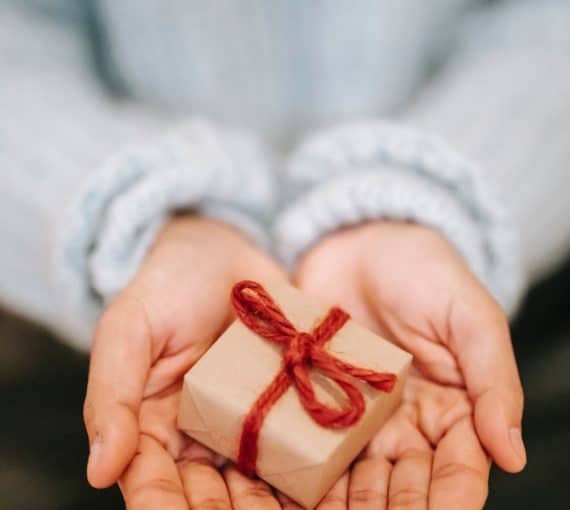
Recycled paper
Instead of purchasing new wrapping paper, take a look around you. Do you have scrap paper floating around your house or office that could be repurposed into wrapping paper? (Make sure you have no sensitive information on the paper before using it for gifts!)
Consider also using newspaper, outdated calendars, tissue paper from packages, old maps, damaged books — even old school notes! The many creative ways to use “scrap” paper will give your gifts a unique look and may also could evoke fond memories for the recipient (e.g., a map from a shared road trip).
Decorate the wrapping with children’s drawings, your own doodles or potato stamps. Get crafty!
If you’re using new wrapping paper, make sure it’s 100 per cent recycled paper that’s high in post-consumer fibre, printed with vegetable ink and not bleached with chlorine.
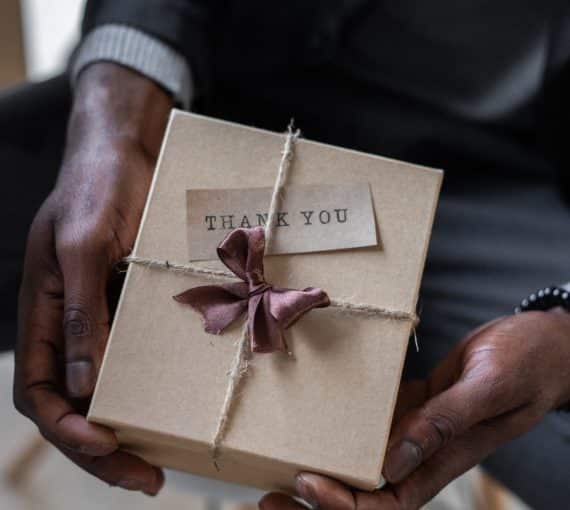
Ribbons, bows, gift bags and boxes
Ribbons and bows are often made from a mysterious blend of plastics that are hard to recycle. Opt for biodegradable raffia, compostable paper or reusable fabric alternatives.
To avoid buying new, carefully open, save and reuse ribbons, bows, gift bags, boxes and wrapping paper you receive.

Take inspiration from nature
Create decorations with pine cones, dried flowers and other little treasures from your backyard or community green space. They add a fun natural touch to your gifts and can be used again by the recipient as home décor.
